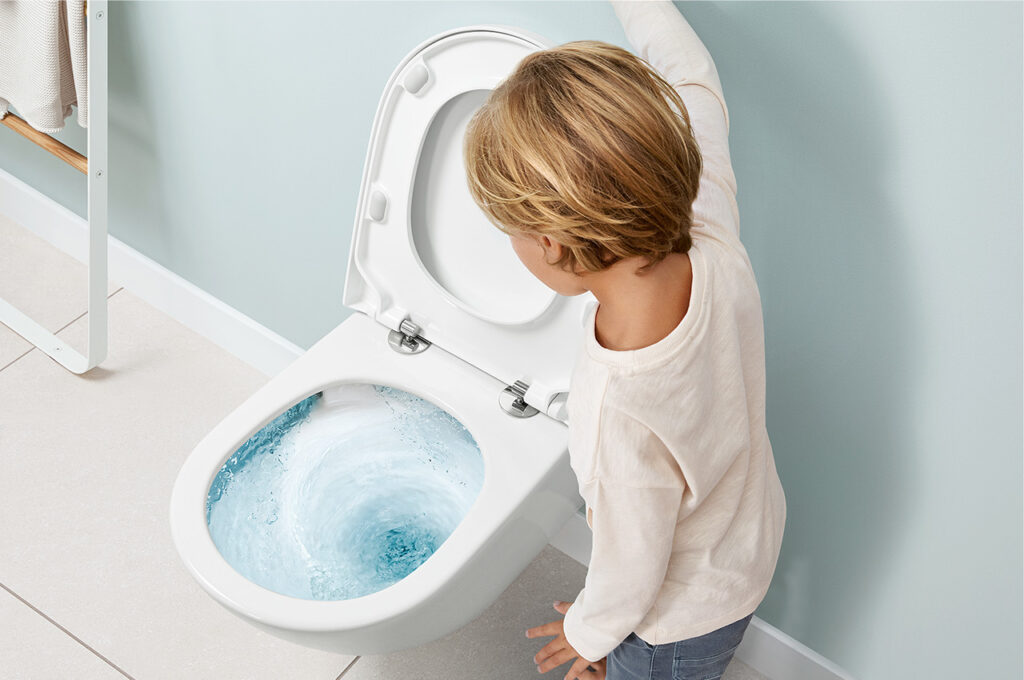Clogging is a common plumbing concern for homeowners. While many people choose to go for the DIY way to remove clogs, others opt for additional assistance from experts. Handling and solving clog issues is not an easy task for many homeowners. So, the best way to deal with a clogging toilet more effectively is to prevent your toilet from clogging. First, it is important to know the various reasons why your toilet is clogging endlessly.
What Are the Potential Causes of Toilet Clogs?
Identifying the root cause of a clog is essential. It gives you a clue on where to start unclogging your toilet. Here are potential reasons that lead to the formation of clogs:
- Too Much Tissue Paper – Excessive use of tissue paper can lead to clogs. Yes! Flushing down too much tissue paper may block the sewer line or toilet trap way, especially if your toilet paper type does not dissolve quickly.
- Sewer Line Blockage – Sometimes, your sewer line could be the problem. A sewer line can get clogged frequently without you noticing. Heavy dirt particles, hair, or excess tissue paper may block the sewer line a few meters from the toilet unit and cause clogs.
- Hard Water Complication – Did you know that using hard water to flush your toilet can be a problem? Most homeowners who live in areas with salty water experience this scenario more frequently. Hard water calcifies to produce white coloring matter that sticks on your toilet’s drain pipe. With time, the white matter narrows your toilet’s waste paths. So, the more you flush your toilet using hard water, the more the minerals build up and block the passageways, leading to clogs.
- Lack Of Enough Water in The Cistern – Your toilet flush system produces a flushing pressure depending on the amount of water in the cistern. So, if your cistern is half-filled or not filled to the brim, there will be little pressure to push the waste, leading to clogs.
Your toilet may also clog if you flush down foreign substances. Children love water and can mysteriously transfer foreign substances straight into toilets. When toys and other foreign substances get flushed in your toilet, you will likely experience clogging issues.

Additionally, your toilet can clog if the flushing system isn’t strong enough. So, if you still use the first-generation flush toilet unit in your home, you’ll likely experience frequent clogs. These toilets were famous for their water-saving feature. But the first flush generation toilets, commonly known as low flush toilets, tend to experience clogs. You’ll want to invest in a modern no-clog toilet to address clogging issues for good.
How to Prevent Clogs
Now that you are aware of various causes of toilet clogs, it is easier to tackle and prevent your toilet from clogging. The following tips should ensure your toilet is running smoothly, and they are pretty easy to put into practice.
Regularly Monitor for Leaks
Toilet drainage lines are mostly covered with water, and this feature permits wastes to flow through without facing obstacles. When you notice loosened bolts that join the toilet parts or those of the cistern, make sure to tighten them. Loosen bolts can be a cause of water leakage. So, if you notice leaking drainage pipes, consider installing new pipe upgrades.
Practice Proper Flushing
Proper flushing is the easiest way to prevent your toilet from clogging. Correct flushing means being mindful of all substances that you flush down your toilet bowl. Also, it would be best if you were keen on the amount of tissue paper you use – you don’t want to use too much tissue paper. As a rule of thumb, don’t flush anything other than tissue paper or human waste.
Regular Cleaning with Appropriate Cleaners
Develop a regular habit of cleaning your toilet to help detect potential leaks. Be sure to use appropriate drain cleaners. You don’t want to destroy the toilet lines with corrosive chemicals. So, always use the recommended toilet chemical cleaners.
Additionally, consider flushing the toilet twice. Flush your toilet before throwing any toilet paper into the bowl for the first flush. Release the toilet paper and flush for the second time, but don’t use too much tissue paper.
Avoid Placing Items on Top of The Tank
You should avoid placing items such as brushes, tissue paper, or soap on top of your toilet tank. Sometimes, kids are anxious and might accidentally push the items down the toilet bowl. You don’t want this to happen, so just keep everything off the cistern.
If you notice any toilet clog, always make a fast move. Instead of enduring a clogged toilet, try out these tricks or consult a skilled local plumber to address the issue for good.
Wrapping Up
Do you want an ever-clean bathroom that is free from germs and bad smells? You should work hard to prevent potential toilet clogs proactively. Besides knowing the various ways of avoiding toilet clogs, consider investing in a no-clog toilet system for your home. It’s the ideal move to make if you need a permanent solution.





